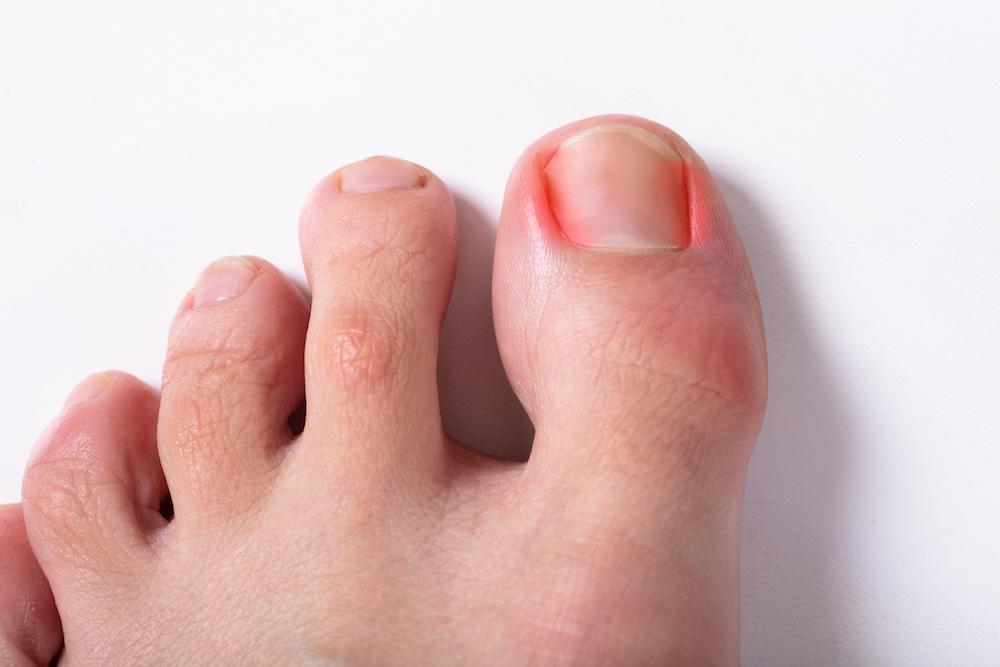
When Does an Ingrown Toenail Require a Visit to the Podiatrist?

Most of us rarely think about our toenails. That is, of course, until you have one that ingrown ad throbbing. Healthy toenails lie flat across the nail bed on your toe, but when your toenail grows into the flesh at the edge of your nail bed rather than straight out, it hurts - often a lot.
Your ingrown toenail may be the result of a toe injury. Other common culprits include cutting your toenails on a curve, rather than straight across, or wearing tight or pointed shoes. If you experience ingrown toenails frequently, you may have inherited curved nails or fleshy nail beds that special extra attention.
Big toes are most susceptible to ingrown nails, though they can develop on any. You can try treating your ingrown nail at home with over-the-counter numbing solutions or by soaking your feet in warm water, then gently lifting the nail out of your flesh. If that doesn’t work, it’s time to seek medical attention.
When should yo
u run — or hobble — to the podiatrist for ingrown toenail treatment? Dr. Samuel Cox of Arizona Foot & Ankle Specialists, advises seeking care in the following situations:
It’s infected
Heat, redness, and pus signal a possible infection. If you have any of these symptoms, seek immediate medical care. Redness that spreads down your toe or across your foot is also a sign of infection. Untreated nail infections can spread to other parts of your body, leading to serious complications, including a bone infection.
The pain is extreme
If your ingrown toenail affects your gait or impairs your everyday routine, don’t try and endure the pain. Getting proper treatment for an ingrown toenail gives you relief so you can return to your normal activities as soon as possible.
Self-treatment doesn’t work
If home remedies, such as over-the-counter medication and hot-water soaks don’t work, it’s time to see the podiatrist. Expert ingrown toenail treatment is simple and fast.
You have diabetes or peripheral artery disease
If you are diabetic or have peripheral artery disease (PAD), you should inspect your feet and toes daily. These conditions affect sensation in the feet and toes, which means you may not initially notice an injury or feel the pain of an ingrown toenail. At the first sign of an ingrown toenail, seek treatment from your podiatrist to reduce the risk of a serious infection.
You ingrown toenails are frequent
If you have chronic ingrown toenails, Dr. Cox may recommend surgery to correct the problem. Surgery can remove the portion of the nail bed that blocks your toenail so it can grow in healthy and straight.
A few minutes, and you’re back on your feet
Treatment for a routine ingrown toenail is straightforward. Dr. Cox numbs your toe and removes the part of the nail that’s causing the problem.
For relief from ingrown toenail pain and to prevent the possibility of infection, give us a call at 623-935-5780 or request an appointment using our convenient online booking tool to set up an appointment.
You Might Also Enjoy...


Why Prompt Care of a Sprained Ankle is Critical

Recognizing the Early Signs of Peripheral Neuropathy

5 Tips for Avoiding Toenail Fungus This Summer

Heel Pain: 5 Common Causes


